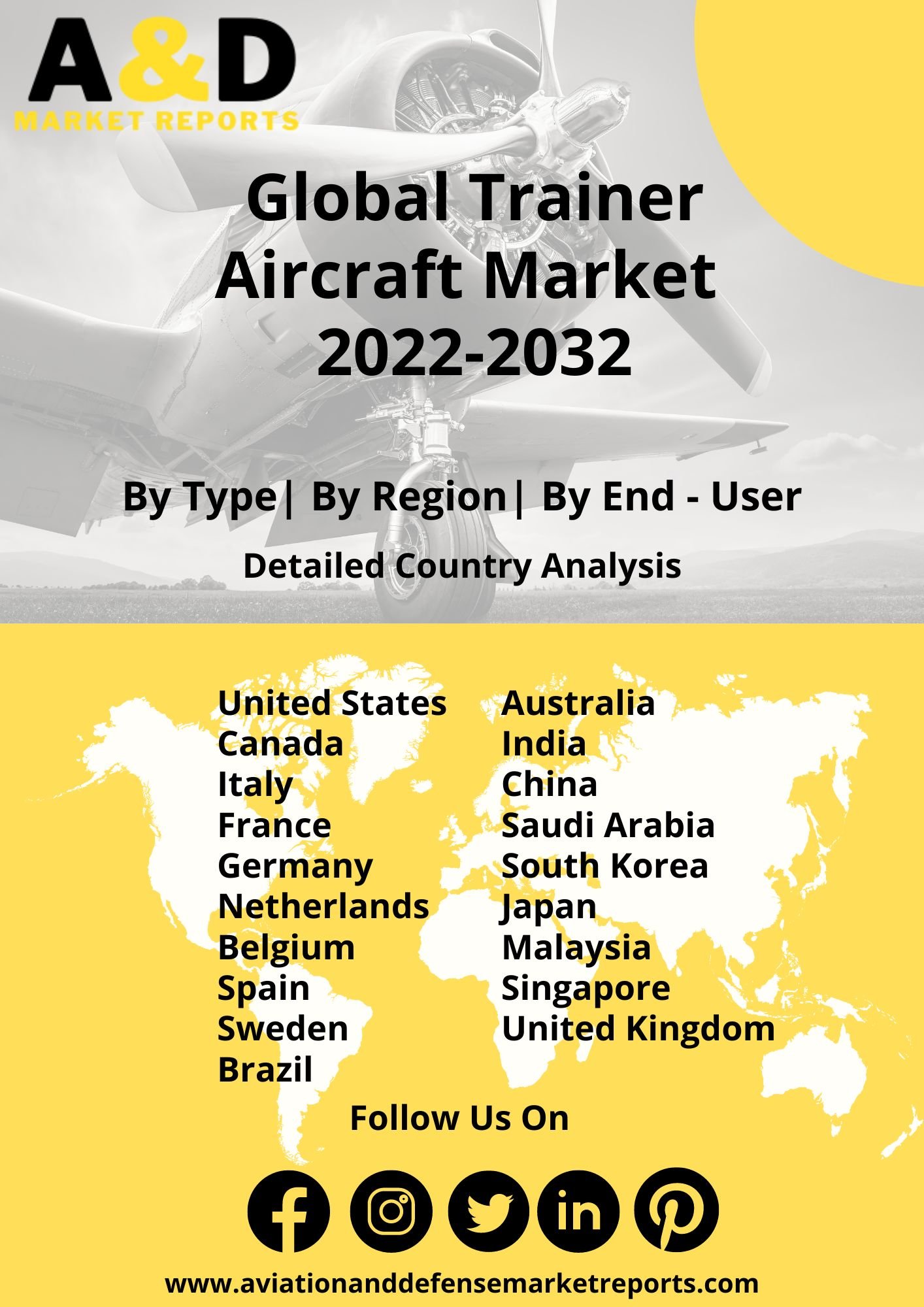Description
Trainer Aircraft Market
Frequently Asked Questions of Trainer Aircraft Market
Pilots have needed to learn the fundamentals of flying planes for generations before moving on to combat missions, and flight instruction has been an important element of this preparation. As technology has improved, so have the trainer planes that instruct new pilots before they advance to their ultimate aims. The military has been looking for ways to teach its soldiers as swiftly and efficiently as possible since its establishment. This is especially true in aerial combat, where pilots must be ready to perform intricate missions at the drop of a hat. The efficiency of these training activities is frequently determined by how realistic they are. It’s no surprise that militaries all over the world are turning to simulator technology to develop fighter jet simulators.
Propeller trainers are the most basic type of trainer aircraft. They are simple and effective, easy to construct, and the aerodynamics are well-known and documented. A low-wing monoplane is simple to design, prototype, and mass production, and it has a powerful wing. The wing can be shipped as a single element and then elevated into place during final assembly. It also allows you to employ a tricycle landing gear layout, which makes taxiing much easier because the plane is level when on the ground. Modern jet trainers are outfitted with onboard technology that generates tactical training simulations, allowing the aircraft to simulate sensors, weaponry, and computer-generated forces. These modern jet trainers, with digital capabilities that train pilots in live flight, virtual simulations, and constructive settings, equip pilots to fly some of the world’s most advanced frontline jet fighters.
The T-7A Red Hawk is a brand-new advanced pilot training system developed for the United States Air Force that will teach the next generation of fighter and bomber pilots for decades. The T-7A, which was designed with a digital thread, corresponds with the US Air Force’s Digital Century Series goal by allowing for the speedier and more cost-effective incorporation of new concepts and capabilities through virtual testing.
Major factors driving Trainer Aircraft Market Growth
Next-generation fighter programs and procurement of advanced fighter aircraft by armed forces across the world will create demand for various classes of trainer aircraft. Hence this will be one of the key market trends that will drive the growth of the trainer aircraft market.
Trends influencing the Trainer Aircraft Market Size
Supersonic flying, a full glass cockpit, a four-channel digital fly-by-wire system, a heads-up display, a helmet-mounted display system, advanced avionics, sensor, and modular systems will continue to dominate the forthcoming military trainer aircraft in various stages of development worldwide. All trainer aircraft will have to have a low operating cost. These will be some of the key market trends that will influence the growth of the market
Trainer Aircraft Market Forecast & Dynamics
Increasing defense spending will drive the market for new procurement activities and upgrades to existing platforms with newer capabilities. The increase in defense spending will encourage the procurement of new trainer aircraft. Procurement will also be driven by prevailing geo-political conditions in Europe and the Asia Pacific. The market forecast includes a comprehensive market analysis and market size. The market analysis includes regional market size, drivers, restraints, and opportunities. The regional analysis also includes country-wise market size.
Trainer Aircraft Market Analysis for Recent Developments
The Arab Organization for Industrialization (AOI) of Egypt has agreed to collaborate with Korean Aerospace Industries (KAI) to localize the manufacturing technologies of the T-50/FA-50 Golden Eagle advanced trainer jet and light combat aircraft. KAI is attempting to sell its FA-50/T-50 Golden Eagle fighter to the North African country, while Egypt intends to export the plane to third parties. Should Egypt receive the Golden Eagle, the agreement struck last week calls for the localization of technologies. The Egyptian Air Force (EAF) is looking for a new trainer aircraft to replace its aging fleet and educate student pilots for the recently delivered Rafale fighter jet and the upcoming Sukhoi Su-35 fighter jet. If purchased, the planes will replace Egypt’s aging Alpha Jet and K-8 jet trainers with 100 new planes, 70 of which will be constructed in Egypt.
BAE Capabilities and American technology startup Red 6 have agreed to collaborate on the integration of advanced tactical augmented reality systems onto Hawk fast jet trainer aircraft. During training, the system would allow pilots to effectively identify, engage, and eliminate simulated threats while also cooperating with virtual wingmen. It would also aid in the preparation of “future pilots” by introducing manufactured enemies, wingmen, and surface dangers into the training environment.
Iranian Defense Minister Amir Mohammad Reza Ashtiani paid a visit to a base where Iran’s new locally-made Yasin training jet is preparing to take on a larger role in the Iranian air force. The jet was unveiled earlier this year as part of Iran’s long-term plan to produce more aircraft locally. Iran already manufactures a large number of drones and missiles. Producing aircraft is more difficult. Iran’s aircraft manufacturing was harmed during the 1979 revolution, but the Shah’s regime left Iran with several advanced factories linked to Western companies. Iran intends to use this aircraft to improve the experience of its pilots. Iran intends to purchase additional aircraft from Russia in the future. Ashtiani is convinced that this aircraft will teach Iranian pilots how to fly a new generation of aircraft. It is unclear whether this aircraft meets the fourth-generation Western aircraft standards. It is clearly not comparable to fifth-generation aircraft such as the F-35. Iran also believes the aircraft can provide close air support and carry missiles equipped with guidance systems. Iran also recently revealed a new capability for its Karrar drone, which includes air-to-air missiles. The drone and this aircraft have a range of around 1,000 kilometers, indicating that Iran’s air defenses continue to be compromised by a small number of actual aircraft. Nonetheless, the two announcements show that Iran is concentrating its efforts in the air.
Key Companies







